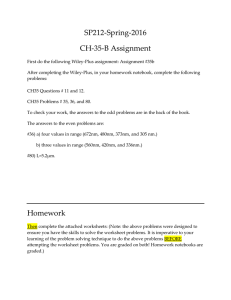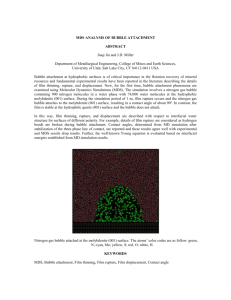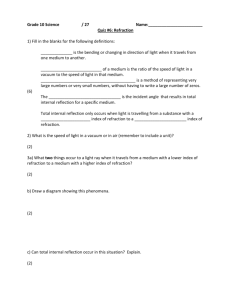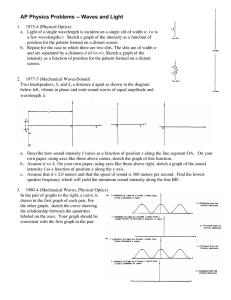What Does Light See? Worksheet Example
advertisement
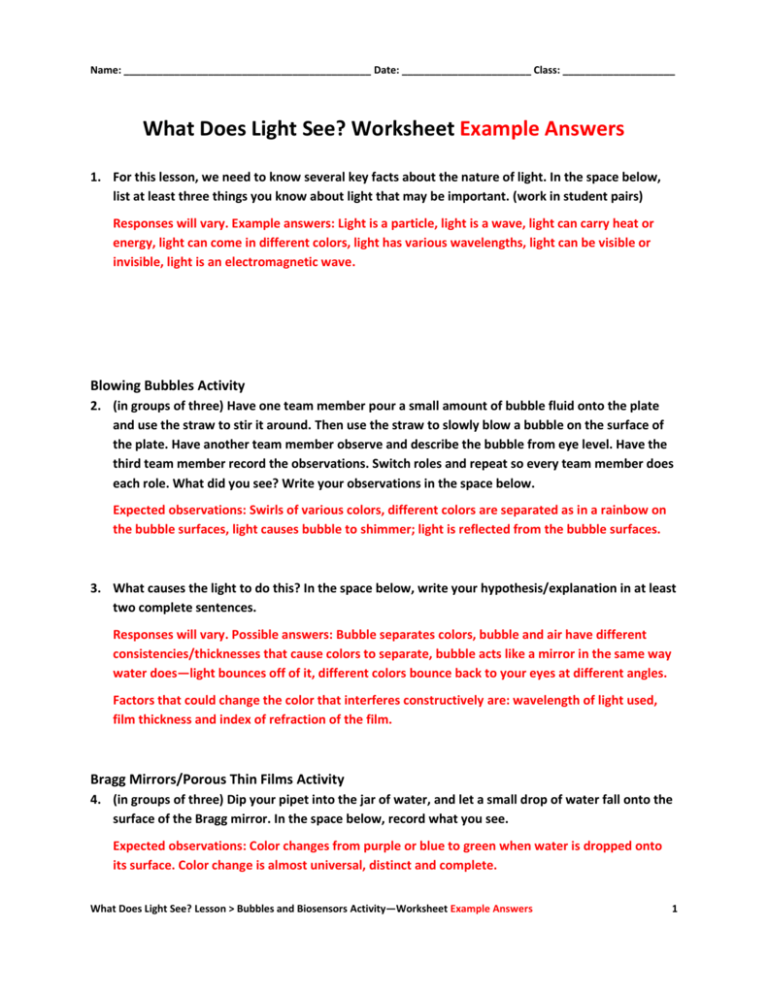
Name: ____________________________________________ Date: _______________________ Class: ____________________ What Does Light See? Worksheet Example Answers 1. For this lesson, we need to know several key facts about the nature of light. In the space below, list at least three things you know about light that may be important. (work in student pairs) Responses will vary. Example answers: Light is a particle, light is a wave, light can carry heat or energy, light can come in different colors, light has various wavelengths, light can be visible or invisible, light is an electromagnetic wave. Blowing Bubbles Activity 2. (in groups of three) Have one team member pour a small amount of bubble fluid onto the plate and use the straw to stir it around. Then use the straw to slowly blow a bubble on the surface of the plate. Have another team member observe and describe the bubble from eye level. Have the third team member record the observations. Switch roles and repeat so every team member does each role. What did you see? Write your observations in the space below. Expected observations: Swirls of various colors, different colors are separated as in a rainbow on the bubble surfaces, light causes bubble to shimmer; light is reflected from the bubble surfaces. 3. What causes the light to do this? In the space below, write your hypothesis/explanation in at least two complete sentences. Responses will vary. Possible answers: Bubble separates colors, bubble and air have different consistencies/thicknesses that cause colors to separate, bubble acts like a mirror in the same way water does—light bounces off of it, different colors bounce back to your eyes at different angles. Factors that could change the color that interferes constructively are: wavelength of light used, film thickness and index of refraction of the film. Bragg Mirrors/Porous Thin Films Activity 4. (in groups of three) Dip your pipet into the jar of water, and let a small drop of water fall onto the surface of the Bragg mirror. In the space below, record what you see. Expected observations: Color changes from purple or blue to green when water is dropped onto its surface. Color change is almost universal, distinct and complete. What Does Light See? Lesson > Bubbles and Biosensors Activity—Worksheet Example Answers 1 Name: ____________________________________________ Date: _______________________ Class: ____________________ 5. Based on what you now know about refraction, what parameter was altered when you dropped the water onto the sample? How did changing this parameter cause the observed effect? Possible correct responses include: 1) Thickness of sample changed due to water sitting on top of it. Since it was thicker, a longer wavelength of light “fit” into it, and underwent constructive interference back to our eyes, and 2) the index of refraction changed, causing the light to be bent more (or less), so the longer or shorter path the light took allowed a different wavelength of light undergo constructive interference back to our eyes. Exit Ticket (answer the following questions) 1. What is refraction, and what causes it? Answer: Refraction is the bending of light, caused by the change in speed of light as it enters a different material. 2. What parameters can we change to cause a shift in the color that we observe in a thin film, and how do these parameters bring these changes about? Explain each parameter in at least one complete sentence, or draw a picture. Answers: Thickness of sample: A thicker or thinner sample means that a longer or shorter wavelength of light will “fit” into it, causing a different wavelength of light to undergo constructive interference and return to our eyes. Index of refraction: Controls the extent to which light is bent as it enters the thin film, which results in a longer or shorter path for the light ray to follow, so a different wavelength of light will undergo constructive interference and return to our eyes. 3. How can a porous thin film use refraction to tell us if a certain microscopic element is present, and could this help us solve our challenge question? Answer: If a certain microscopic element binds to our film, it changes the index of refraction of the film, causing it to reflect different wavelengths of light than it originally did before exposure to the microscopic element in question, as described in #2 above. This could help us solve our challenge question by giving us a way to detect certain genes, for example, if a cancer-causing gene were to bind to our sample, we could detect its presence. What Does Light See? Lesson > Bubbles and Biosensors Activity—Worksheet Example Answers 2
